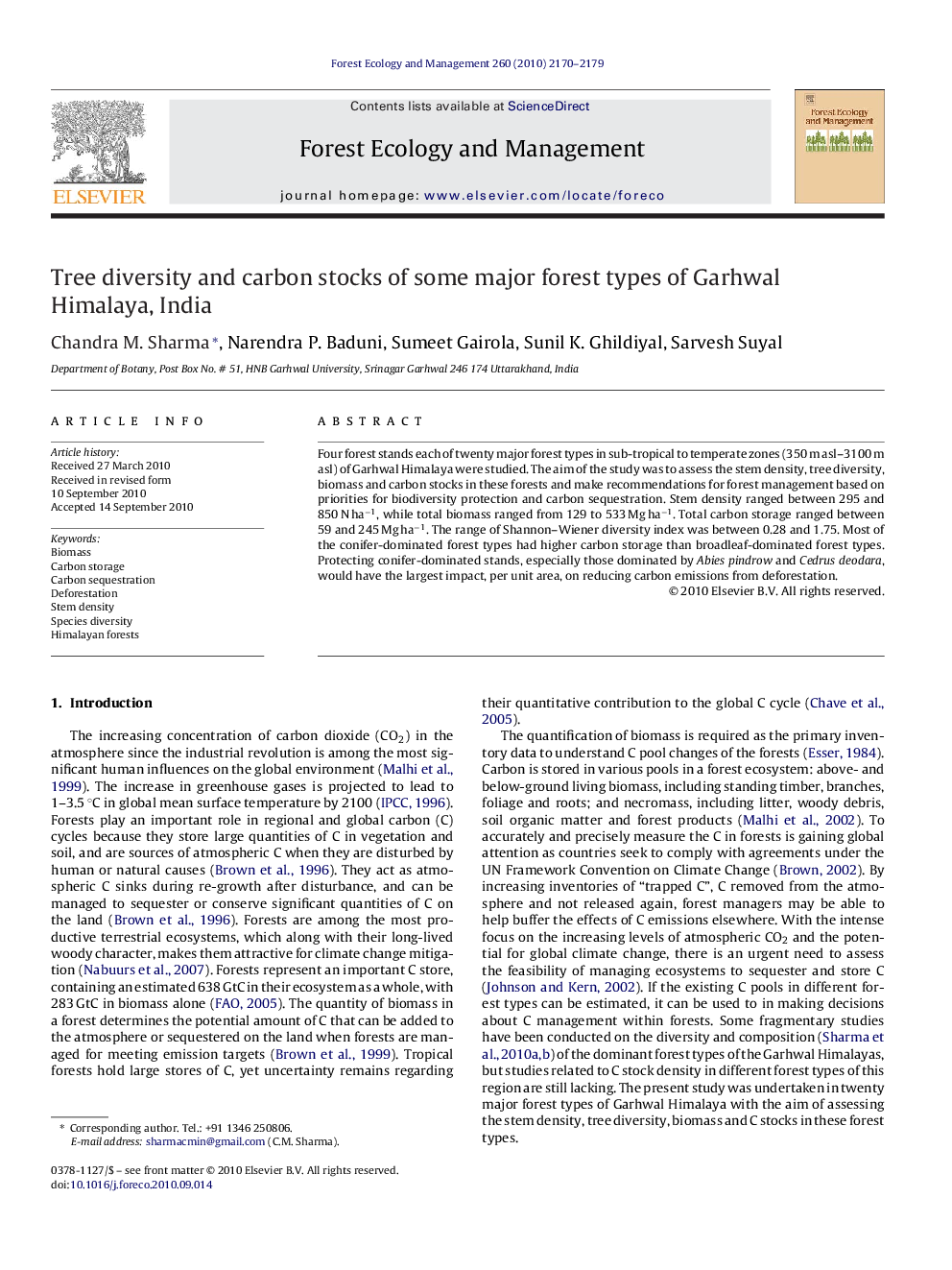| Article ID | Journal | Published Year | Pages | File Type |
|---|---|---|---|---|
| 87788 | Forest Ecology and Management | 2010 | 10 Pages |
Four forest stands each of twenty major forest types in sub-tropical to temperate zones (350 m asl–3100 m asl) of Garhwal Himalaya were studied. The aim of the study was to assess the stem density, tree diversity, biomass and carbon stocks in these forests and make recommendations for forest management based on priorities for biodiversity protection and carbon sequestration. Stem density ranged between 295 and 850 N ha−1, while total biomass ranged from 129 to 533 Mg ha−1. Total carbon storage ranged between 59 and 245 Mg ha−1. The range of Shannon–Wiener diversity index was between 0.28 and 1.75. Most of the conifer-dominated forest types had higher carbon storage than broadleaf-dominated forest types. Protecting conifer-dominated stands, especially those dominated by Abies pindrow and Cedrus deodara, would have the largest impact, per unit area, on reducing carbon emissions from deforestation.
Research highlights▶ Study provides quantitative data on stem density, tree diversity, carbon (C) stocks. ▶ Protection of conifer-dominated stands would have largest impact on reducing C emissions. ▶ In lower Himalaya Shorea robusta, Holoptelea integrifolia may be preferred for C sequestration. ▶ Species diversity and stem density are negatively correlated with C storage.
